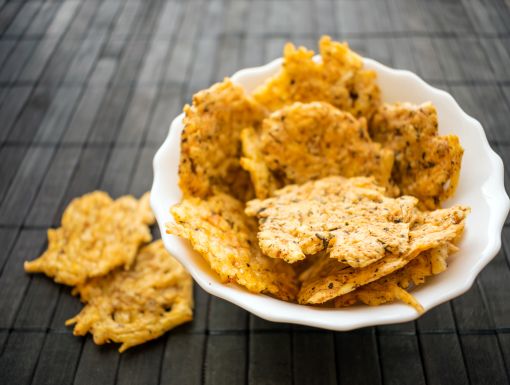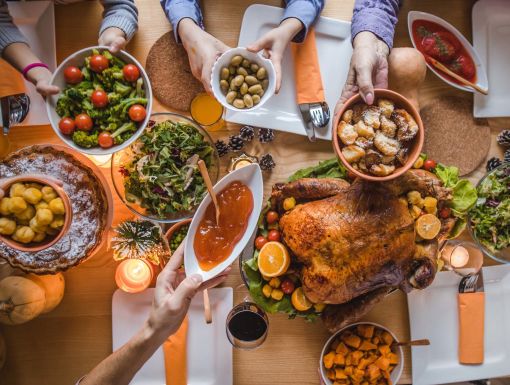
How to Build a Healthy Charcuterie Board
Charcuterie boards are always wildly popular, especially throughout the holiday season. They’re fun, festive, beautiful and – with just a little bit of planning – can be nutritious, too. Read on for our step-by-step guide on how to build a healthy charcuterie board, compiled by Kendall Finn of Plattered NOLA.
Guide to building a healthy charcuterie board
1. Select your board (or platter or plate). On a budget? A wooden cutting board will work just fine.
2. Arrange all cheeses first, followed by empty ramekins for olives, pickles, dips, spreads and sauces. Some sauces, like coarse mustard, can go straight onto the board; others are best in little bowls or vessels.
3. Meats are next up. Whether you are making a rose or a river, folding the meats adds interesting texture, versus just laying them flat on the board.
4. Add crackers, since they take up much of surface area of the board. If you’re making your charcuterie board in advance, save space for crackers and add them just before serving, so they won’t get soggy in the fridge.
5. Don’t forget your other favorite ingredients. Fill in the remaining space on the board with fresh fruits, dried fruits and nuts. Then fill your ramekins with jams, jellies, pickles, olives, etc. You might consider placing the items that pair well together closer to each other, or you may arrange them by the type of ingredient, color or texture.
6. Finish your board with fresh or dried herbs like sage, rosemary or mint for garnish. You’re ready to go!
My top picks for healthy charcuterie board ingredients
Cheese
Lower-sodium varieties include:
- Goat cheese
- Burrata
- Fresh mozzarella
- Swiss
Crackers
Opt for whole grain, unrefined products like:
- Mary’s Gone Crackers
- Triscuit Thin Crisps
- Akmak Sesame Whole Grain Crackers
- Sprinkling of Parmesan crisps
Meats and proteins
Better-for-you options include:
- Smoked salmon
- Shrimp with a squeeze of lemon
- Naturally cured prosciutto
- Roasted chickpeas or edamame
- Marinated tofu
To schedule a nutrition consult, whether virtually or in-person, contact us at nutrition@ochsner.org or call us at 985-898-7050.
Crudité
Some ideas for items for dipping:
- Olives
- Vegetables picked in vinegar (think okra, peppers, onions and mushrooms)
- Fermented vegetables or kimchi
- Thinly sliced pink or watermelon radishes
- Roasted red and yellow peppers
- Cherry tomatoes
- Sliced fennel
- Endive leaves
- Jicama sticks
Fruits
Crowd favorites include:
- Figs (sliced lengthwise)
- Cherries
- Blueberries
- Blackberries
- Apples
- Pears
- Apricots
- Dried fruit (without added sugar)
Nuts
Any and all!
- Raw
- Savory: Roast with olive oil, spices, a dash of salt
- Sweet and savory: Roast with olive oil, a sprinkle of Swerve, a dash of salt
Dips and sauces
My top choices are:
- Creamy dips made with 2% Greek yogurt
- Eggplant dip
- Whole grain mustard
- Hummus (add color with beet or edamame hummus)
- These three pre-made healthful dips
Editor's note: Registered dietitian Molly Kimball offers brand-name products as a consumer guide; she does not solicit product samples nor is she paid to recommend items. A version of this article originally appeared on WGNO.



